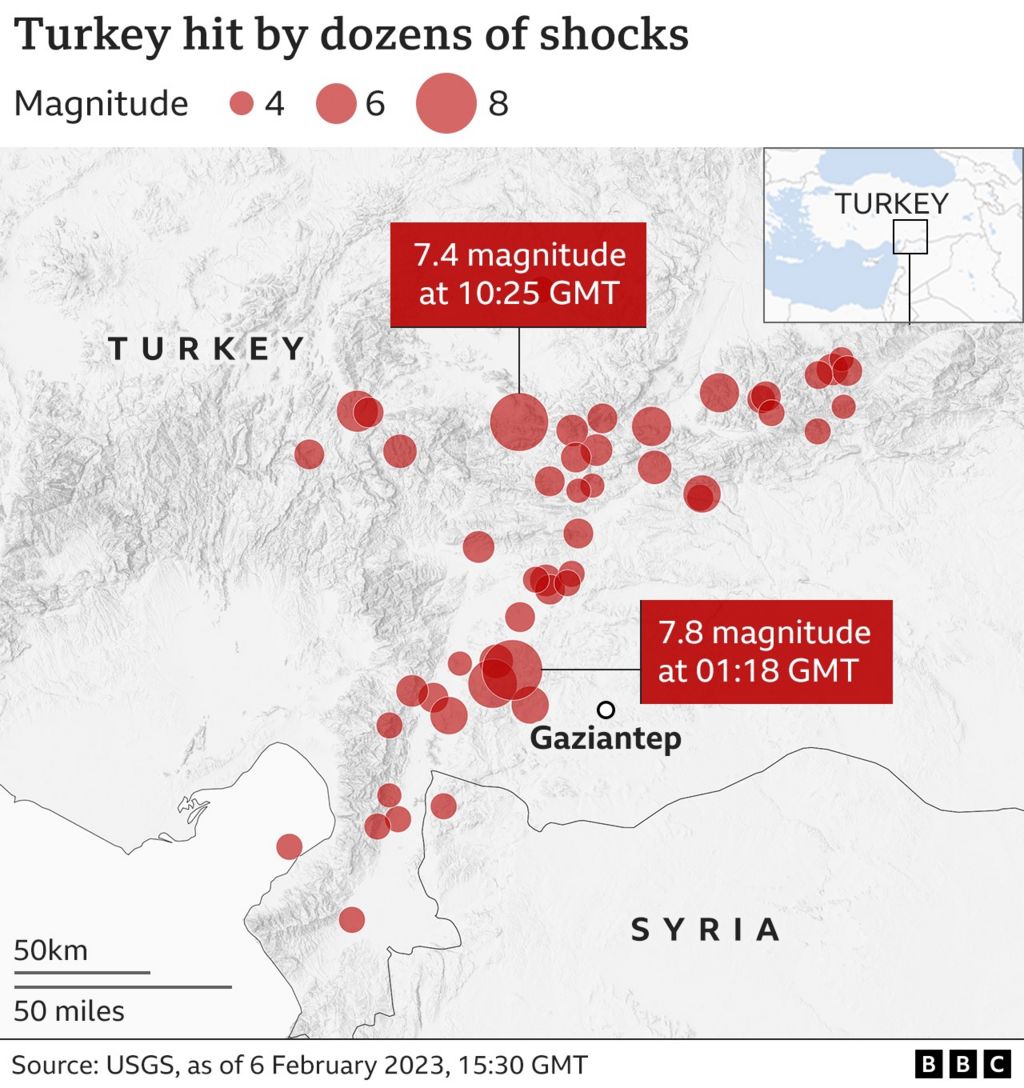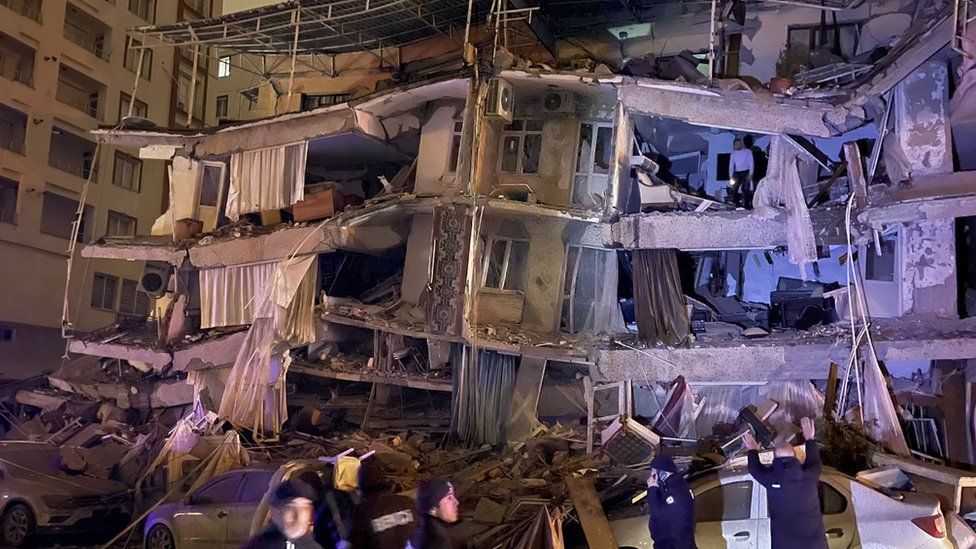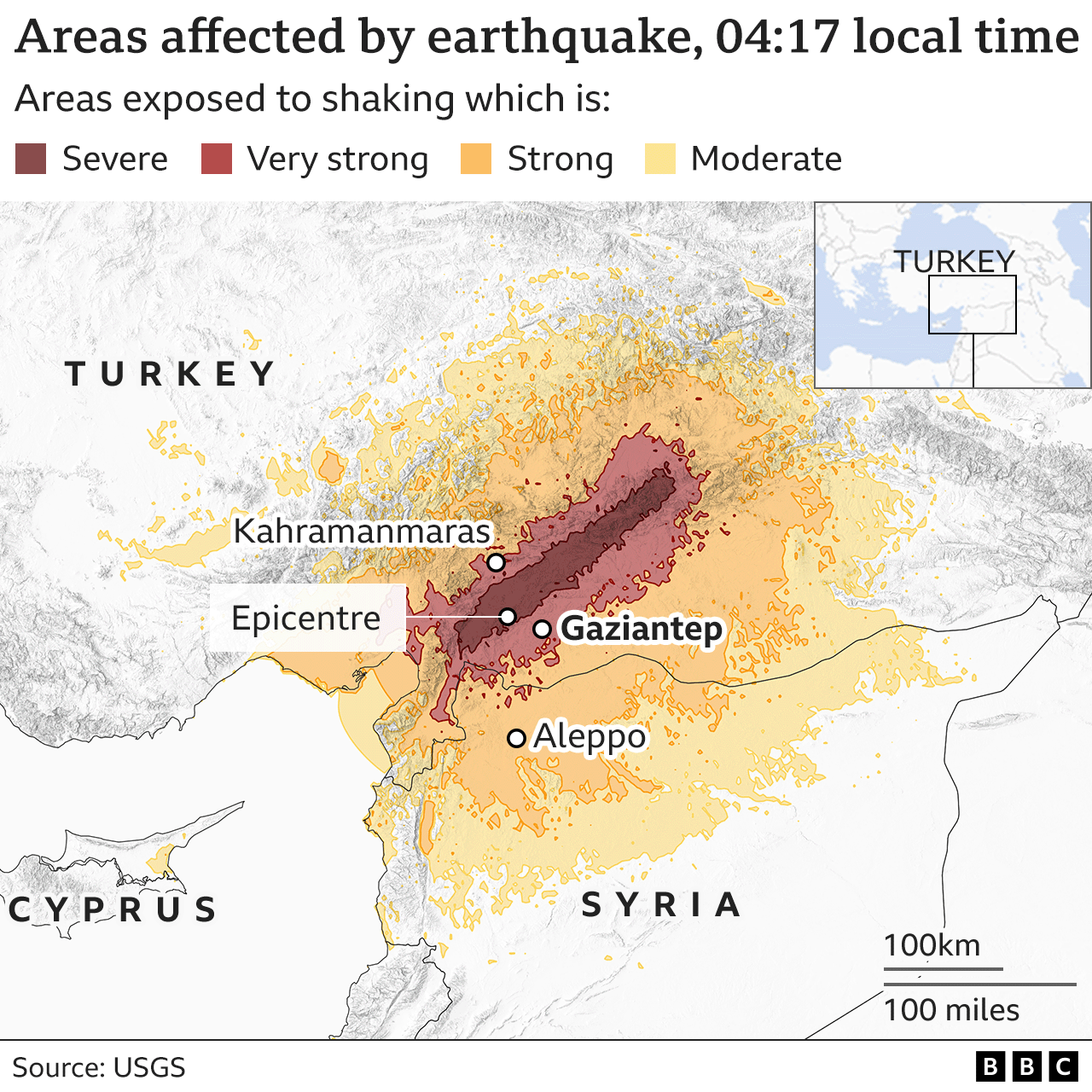Latest Thread
You are using an out of date browser. It may not display this or other websites correctly.
You should upgrade or use an alternative browser.
You should upgrade or use an alternative browser.
There are Turkish Cypriot students under a collapsed Hotel in Adıyaman, we are waiting for help but no help up to now. TRNC send search and rescue teams but they are unable to remove the debris. It is so painful to see videos of collapsed buildings, people in the cold without houses or under debris.Unfortunately, there are many accounts coming out of the Hatay region, that no help has so far reached the region.
The military should be fully mobilized as soon as possible.
Please mobilize the Army!!
Our children are under Isias Hotel Adıyaman, we need help.
Those fuckers who built, approved and anyone involved to building process should be put on trial! I am very sad and frustrated at the same time, this catastrophe could have been avoided!Newly built buildings are collapsing after the earthquake:
Half of the province county is missing in Gaziantep. Total population is 80000 people.
Last edited:
@Cypro
A building that does not collapse during an main earthquake is considered technically successful. The collapse of the aftershocks after the earthquake does not change this. Because it gives the opportunity to evacuate those who live in it. Moreover, on the same day and in more or less the same place, there were 2 earthquakes with a scale above 7.5. Thus this building is successful. The builders should be thanked, not cursing.
Curse those who built and approved of the buildings destroyed in tthe main earthquake.
A building that does not collapse during an main earthquake is considered technically successful. The collapse of the aftershocks after the earthquake does not change this. Because it gives the opportunity to evacuate those who live in it. Moreover, on the same day and in more or less the same place, there were 2 earthquakes with a scale above 7.5. Thus this building is successful. The builders should be thanked, not cursing.
Curse those who built and approved of the buildings destroyed in tthe main earthquake.
more teams toward syria and turkey tonight






BalkanTurk90
Contributor
Dont post all kind of fake tweets that u can find on twitter , How do he know ?Half of the province is missing in Gaziantep. Total population is 80000 people.
Province of Gaziantep have 2+million people + 500k Syrian refugges .
Read tweet it says ilçe(county/district), not the entire province of Gaziantep. He just mistranslated, no need to be immediately on offensive. Most likely is Islahiye.Dont post all kind of fake tweets that u can find on twitter , How do he know ?
Province of Gaziantep have 2+million people + 500k Syrian refugges .
This is a direct quote from the officials in the Gaziantep. Dont worry i never posted fake news. and i never will.Dont post all kind of fake tweets that u can find on twitter , How do he know ?
Province of Gaziantep have 2+million people + 500k Syrian refugges .
Death toll could increase eight-fold, WHO says
By Tiffany Wertheimer
BBC News
The death toll from a strong earthquake in south-eastern Turkey, near Syria's border, could rise eight-fold, the World Health Organisation has warned.
The toll, which currently stands at more than 3,400 people, has increased rapidly since the first earthquake struck early on Monday morning.
About 12 hours later, a second powerful tremor hit further north.
Rescuers have been combing through mountains of rubble in freezing and snowy conditions to find survivors.
Countries around the world are sending support to help the rescue efforts, including specialist teams, sniffer dogs and equipment.
The US Geological Survey said the 7.8 magnitude tremor struck at 04:17 local time (01:17 GMT) at a depth of 17.9km (11 miles) near the city of Gaziantep.
Seismologists said the first quake was one of the largest ever recorded in Turkey. Survivors said it took two minutes for the shaking to stop.
The second quake - triggered by the first - had a magnitude of 7.5, and its epicentre was in the Elbistan district of Kahramanmaras province.
Many aftershocks are still being felt across the region.
The number of dead and injured from both Turkey and Syria has increased rapidly throughout Monday.
The WHO has warned that those numbers are likely to increase as much as eight times, as rescuers find more victims in the rubble.
"We always see the same thing with earthquakes, unfortunately, which is that the initial reports of the numbers of people who have died or who have been injured will increase quite significantly in the week that follows," the WHO's senior emergency officer for Europe, Catherine Smallwood, told AFP.
Ms Smallwood added that the snowy conditions will leave many people without shelter, adding to the dangers.
- Latest updates as death toll rises in Turkey and Syria
- The eyewitnesses who captured the quake on social media
- Why were the earthquakes in Turkey so deadly?
Thousands of buildings across both the countries have collapsed, and several videos show the moment they fell, as onlookers ran for cover. Many buildings that were as large as 12 storeys high are now flattened, roads have been destroyed and there are huge mountains of rubble as far as the eye can see.
Among the buildings destroyed was Gaziantep Castle, an historic landmark that has stood for more than 2,000 years.
The BBC's Middle East correspondent Anna Foster, reporting from the Turkish city of Osmaniye, near the epicentre, described a devastating scene.
"It's absolutely pouring with rain which is hampering the rescue efforts. There is no power at all in the city tonight.
"We're still feeling regular after-shocks... and there are still concerns that there may be still more buildings to collapse," our correspondent said.


Turkey's energy infrastructure has also been damaged, and videos have emerged showing large fires in southern Turkey. Social media users claimed they were caused by damage to gas pipelines.
Turkey's energy minister Fatih Donmez confirmed there had been serious damage to the infrastructure, but did not mention the explosions.
Turkey lies in one of the world's most active earthquake zones.
In 1999 a deadly quake killed more than 17,000 in the north-west. The country's worst earthquake disaster was in 1939 when 33,000 people died in Turkey's eastern Erzincan province.
One Kahramanmaras resident, Melisa Salman, said living in an earthquake zone meant she was used to "being shaken", but Monday's tremor was "the first time we have ever experienced anything like that".
"We thought it was the apocalypse," she said.

Image caption,
In Diyarbakir, north-east of Gaziantep, a search is now under way for people trapped in damaged buildings
The Turkish Red Crescent has called for citizens to make blood donations, and the organisation's president, Kerem Kınık, said on Twitter that additional blood and medical products were being sent to the affected region.
Following an international appeal for help, Turkey's President Erdogan said 45 countries had offered support.
- Screaming, shaking... how it felt when the quake hit
- Turkish Roman-era castle destroyed by earthquake
The European Union is sending search and rescue teams to Turkey, while rescuers from the Netherlands and Romania are already on their way. The UK has said it will send 76 specialists, equipment and rescue dogs.
France, Germany, Israel, and the US have also pledged to help. Russian President Vladimir Putin has offered help to both Turkey and Syria, as has Iran.
Turkey's interior minister, Suleymon Soylu, said 10 cities were affected by the initial quake including Hatay, Osmaniye, Adiyaman, Malatya, Sanliurfa, Adana, Diyarbakir and Kilis.
School has been suspended in those cities for at least a week.
Media caption,
Diyarbakir, Turkey: 'People are still trapped under the rubble'
A volunteer with the White Helmets rescue group, which operates in rebel-controlled areas of north-western Syria, fought back tears as he described the devastation in Sarmada, near the border with Turkey.
"Many buildings in different cities and villages in north-western Syria collapsed," he told the BBC.
"Still now, many families are under the rubble. We are trying to save them but it's a very hard task for us.
"We need help. We need the international community to do something, to help us, to support us. North-western Syria is now a disaster area," he added.
The earthquake was powerful enough to be felt as far away as Cyprus, Lebanon and Israel.

https://www.bbc.com/news/world-europe-64533851
So if this one is successful what do we call the ones that not even cracked? Or why won't the buildings in Japan don't collapse after second or third wave?@Cypro
A building that does not collapse during an main earthquake is considered technically successful. The collapse of the aftershocks after the earthquake does not change this. Because it gives the opportunity to evacuate those who live in it. Moreover, on the same day and in more or less the same place, there were 2 earthquakes with a scale above 7.5. Thus this building is successful. The builders should be thanked, not cursing.
Curse those who built and approved of the buildings destroyed in tthe main earthquake.
I have friends from Hatay and Iskenderun, according to them it is not good he can not reach his familly. Tommorow we will face the damage of this earthquake, mine odl neighbour from Gaziantep house is damaged they are sleeping ther care for now. Looks like this will the biggest disaster of the Turkish history.
Anyone within Adiyaman, Antep, Diyarbakir, Adana, Malatya or anyone who knows someone in there, contact to Local THY agency. Flights are taking volunteers and aid to region and are returning empty, thus passengers are allowed in (no fee). Destinations are Istanbul and Ankara.
"Technically successful," I said. Of course, there are degrees of success. What I mean here is the lowest level of achievement. In the case of Japan, two factors stand out. The first is, of course, that the Japan buildings are made of light weight and robust. Lightness is very important in an earthquake. Unfortunately, reinforced concrete technique is common in Turkiye and buildings constructed in this style are not light. The other problem, I think, in Turkiye, is that earthquake shock absorbers are not mandatory in buildings.So if this one is successful what do we call the ones that not even cracked? Or why won't the buildings in Japan don't collapse after second or third wave?
The other factor is more interesting. Earthquakes in Turkey are close to the surface (abaut 15 to 30 km) and the faults that cause them are strike-slip faults. The earthquakes produced by these two qualities together are the most destructive types of earthquakes known. Because the radiated energy emerges in a narrow region. Also, the lateral accelerations are generally incredibly high in Turkiye, and very absurd values were measured in the last earthquake. In Japan, earthquakes are very severe, yes, but they occur hundreds of kilometers (abaut 600 km) below the ground. In other words, in Japan the energy spreads over a very large area.
In summary, earthquakes in Turkiye are deadly by their very nature, and the TR's underestimation of this fact (maybe don't care) only aggravates the situation.
Last edited:










